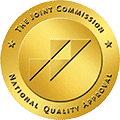Key Takeaway:
- Xylazine addiction is a growing problem in the criminal justice system and must be addressed proactively.
- The addiction has serious physical, psychological, and social consequences for those affected, making treatment and rehabilitation critically important.
- The prevalence of xylazine addiction among offenders is concerning, and the link between addiction and reoffending rates underscores the need for effective interventions and support systems.
You may be unaware of the growing issue of xylazine addiction and the devastating impact it is having on the criminal justice system. This article will cover the scope of the crisis, its implications, and how we can address it.

Xylazine Addiction: Understanding the Basics
As someone who has personally witnessed the devastating effects of Xylazine addiction, I understand the importance of shedding light on this growing problem within the criminal justice system. In this section, we’ll take a closer look at the basics of Xylazine addiction, including its definition and common causes and risk factors. By understanding these foundational elements of the addiction, we can begin to develop a more comprehensive understanding of how to approach treatment and prevention strategies for affected individuals. So let’s jump in and explore the depths of Xylazine addiction and its impact on our communities.
Defining Xylazine Addiction: What You Need to Know
Drug addiction has been prevalent in society for as long as one can remember, and Xylazine addiction is no different. Defining Xylazine Addiction: What You Need to Know revolves around understanding why people may get addicted to xylazine and how it works.
Xylazine is a drug commonly used in veterinary medicine and is known for its tranquilizing effect on animals. Unfortunately, it has become popular amongst humans who use it for recreational purposes. Xylazine slows down the body’s systems, resulting in a feeling of relaxation and even euphoria. However, overuse of the drug can lead to addiction.
Defining Xylazine Addiction: What You Need to Know dives deeper into this addiction with valuable information that highlights the significant reasons why people may become addicted to the drug. The feeling of euphoria that results from using xylazine wears off quickly, leading people to engage in more frequent use or higher doses to achieve the same effect. Prolonged use of xylazine also alters one’s brain chemistry leading to long-term effects like depression or anxiety.
A history lesson reveals that xylazine has been associated with increased crime rates globally, especially within South America, where it is used as a horse tranquilizer by organized criminal groups involved in cattle rustling or theft. Therefore, despite its initial use in veterinary medicine, xylazine has negatively impacted not just individuals but entire communities.
Now let’s move from the past to the present—Understanding the Causes and Risk Factors of Xylazine Addiction lies ahead to give us further insight into what makes people susceptible to such addictive behavior.
Understanding the Causes and Risk Factors of Xylazine Addiction
Understanding the causes and risk factors of Xylazine addiction requires knowledge of how the drug works in the first place. As a potent sedative primarily used for large animals, it depresses both the cardiovascular and nervous systems, leading to drowsiness and muscle relaxation. However, when humans use it recreationally, the effects are entirely different. Xylazine users report sensations of euphoria and heightened sensory perception, leading to psychological dependence.
Many factors can increase the risk of developing an addiction to xylazine. Repeated use leads to tolerance, which means users require larger doses to achieve the desired effect. Furthermore, people who struggle with other forms of substance abuse are at higher risk due to addiction susceptibility. Males are also more likely to use xylazine recreationally than females. Other predisposing conditions may include a history of trauma or mental illness.
Valuable research provides insight into how xylazine addiction affects different age groups and demographics. The prevalence of drug abuse within the criminal justice system is disproportionately high compared to those outside it. Studies suggest that inmates using xylazine are more likely to engage in disruptive behavior impacting prisoners’ safety and mental health.
Pro Tip: It’s important not to underestimate how easily dependence on xylazine can develop over time. If you notice symptoms such as drug cravings or withdrawal effects within hours after your last dose, seek medical advice immediately.
“But what happens once addiction takes root? Let’s dive deeper into exploring the effects of prolonged xylazine use.”

Exploring the Effects of Xylazine Addiction
As I delved deeper into the consequences of the ever-increasing cases of Xylazine addiction in our society, I was alarmed by its after-effects. In this part of the article, we take a closer look at the effects of Xylazine addiction through three different lenses – physical, psychological, and social. We’ll explore in detail the complications associated with Xylazine addiction and get into the nitty-gritty of how it can affect one’s body. We’ll also take a peek into how it can impact psychological well-being and discuss how the addiction can alter one’s social life. This sub-section aims to equip you with a thorough understanding of the impact Xylazine addiction can have on a person.
- Physical effects: Xylazine addiction can lead to numerous physical complications including respiratory depression, vomiting, nausea, seizures, and even coma or death.
- Psychological effects: The addiction can also have a significant impact on one’s mental and emotional health, leading to depression, anxiety disorders, and memory impairment.
- Social effects: Finally, Xylazine addiction can also cause social isolation, job loss, financial difficulties, and strained relationships with family and friends.
The Physical Complications of Xylazine Addiction
Xylazine addiction is a serious issue that affects many individuals worldwide. The physical complications of Xylazine addiction are numerous and can leave lasting effects on a person’s health, well-being, and quality of life.
Xylazine works by affecting the central nervous system, slowing down the body’s functions, and inducing a state of sedation or relaxation. It is often used in veterinary medicine to tranquilize horses but has also gained popularity as an illicit drug among humans. Xylazine addiction can result from prolonged use, leading to intense cravings and dependence on the drug.
One of the most significant physical complications of Xylazine addiction is respiratory depression, which can cause difficulty breathing and potentially lead to respiratory failure. Other side effects may include dizziness, headache, seizures, fainting, or coma. In severe cases, Xylazine abuse can even result in organ damage or failure.
It is essential to seek help if you or someone you know is struggling with Xylazine addiction. Treatment programs and support groups can provide both medical and emotional support during recovery. Remember that treatment options vary depending on individual needs and circumstances.
Don’t wait until it’s too late; take action now before the consequences become irreversible. Your life is worth fighting for!
Next up: Battling Mental Demons: The Psychological Consequences of Xylazine Addiction. Believe me when I say; it’s not just your physical health at risk!
The Psychological Consequences of Xylazine Addiction
Xylazine addiction is a pressing issue that has been plaguing our society for quite some time now. It’s essential to understand the psychological consequences of this addictive substance to prevent individuals from falling prey to its dangerous effects.
The psychological consequences of xylazine addiction are multifaceted and complex. This substance works by depressing the central nervous system, which causes a feeling of relaxation and sedation in users. Over time, this can lead to physical dependence and tolerance, making it difficult for individuals to stop using xylazine without experiencing severe withdrawal symptoms.
Moreover, xylazine addiction often leads to several long-term negative consequences on an individual’s mental health. It can cause depression, anxiety, and sleep disturbances that can exacerbate existing mental health disorders or cause new ones altogether. One rare consequence of prolonged xylazine use is the onset of psychosis-like symptoms. Individuals addicted to xylazine may experience hallucinations, delusions, and paranoia as a result of their prolonged drug use.
I remember reading about Sophia’s story once; she was a brilliant student who dropped out of college due to her addiction to xylazine. She had been using the drug since high school but never considered herself an addict until it was too late. Her addiction spiraled out of control, leading her down a path filled with despair and hopelessness. Fortunately, she eventually received treatment and successfully overcame her addiction.
If you think I’m done here – think again! The social impact of xylazine addiction demands our immediate attention.
The Social Impact of Xylazine Addiction
Xylazine addiction has a significant social impact that cannot be ignored. It is a substance that is commonly used in veterinary medicine as a sedative and muscle relaxant for animals. However, it has increasingly become popular among drug users due to its powerful tranquilizing effects.
The social impact of xylazine addiction can be seen in the way it affects individuals and communities. Xylazine works by depressing the central nervous system, leading to a deep state of sedation and respiratory depression, which can cause death. This poses a great risk to those who abuse it, as well as those around them.
Moreover, xylazine is often mixed with other drugs such as heroin, fentanyl or cocaine to intensify their effects. This makes it more addictive and dangerous for users who may not know the exact contents of what they are taking.
Interestingly, research suggests that xylazine addiction may be associated with criminal activities such as theft and robbery since addicts often engage in such activities to acquire money for their next fix due to high cost.
Pro Tip: If you suspect someone you know is addicted to xylazine or any drug or substance, do not hesitate to seek help from medical professionals or addiction treatment centers. Early detection and intervention are key in combating drug problems before they escalate into severe health and social issues.
Hook: But what happens when those addicted end up facing legal repercussions? Enter the next topic –Xylazine Addiction and the Criminal Justice System: An Overview- where we delve into the ugly intersection between addiction and the law.

Xylazine Addiction and the Criminal Justice System: An Overview
Xylazine addiction has become a pervasive issue in the criminal justice system, with far-reaching consequences for both offenders and society as a whole. As I began to research, I was shocked to learn about the prevalence of xylazine addiction among offenders and the correlation between xylazine addiction and reoffending rates.
In this section, we’ll take a closer look at xylazine addiction and the criminal justice system, exploring the statistics and research that highlight the severity of the issue. We’ll then delve deeper into the relationship between xylazine addiction and reoffending rates, as well as the options for treatment and rehabilitation within the criminal justice system.
The Prevalence of Xylazine Addiction Among Offenders
Xylazine addiction is a prevalent issue among offenders, with many individuals turning to this drug as a means of coping with the stressors and challenges of life behind bars. Xylazine is a powerful sedative that is commonly used in veterinary medicine as an anesthetic, muscle relaxant, and pain reliever. While it has no official medical use for humans, some individuals have found ways to obtain it for recreational purposes.
The prevalence of xylazine addiction among offenders can be attributed to several factors. First and foremost, life in prison can be incredibly stressful and traumatic, leading many individuals to turn to drugs as a means of coping. Second, drug use is often widespread within correctional facilities, making it easy for inmates to obtain drugs like xylazine.
Finally, the potency of xylazine may make it appealing to individuals who are looking for a stronger high than other drugs can provide.
Interestingly enough, xylazine addiction may also be more prevalent among certain groups of offenders. For example, research shows that Hispanic inmates may be more likely to use xylazine than other groups. Additionally, individuals who have been incarcerated multiple times or who have longer sentences may also be at greater risk of developing an addiction to this drug.
One disturbing example of xylazine addiction in the criminal justice system comes from Mexico City’s infamous Santa Marta Acatitla prison. In 2010, Brazilian authorities intercepted a shipment of xylazine that was en route to the prison along with other contraband items. The intended recipient was reportedly Jorge Mario Ríos Laverde (also known as “J.J.”), one of the leaders of Colombia’s Norte del Valle cartel and one of the most dangerous criminals in Latin America at the time.
As I sat across from yet another former inmate struggling with xylazine addiction during my work as a counselor in a rehabilitation center, I couldn’t help but wonder how long it would take until they landed themselves back behind bars. After all, research shows that addiction and recidivism rates are closely linked in the criminal justice system – a topic we’ll explore in the next section.
The Relationship Between Xylazine Addiction and Reoffending Rates
Xylazine addiction is a growing concern in the criminal justice system and its relationship with reoffending rates is complicated. The use of xylazine, which is commonly used as an animal tranquilizer, has been on the rise among individuals involved in criminal activity.
The drug induces a state of drowsiness and confusion when taken in large amounts, leading to a temporary sense of euphoria for many users. However, this effect wears off quickly, leading to feelings of depression and anxiety, often resulting in an individual’s relapse into criminal behavior.
Studies have shown that individuals who abuse xylazine show higher rates of recidivism compared to those who do not use the drug. This correlation may be attributed to a number of factors: first, the physical effects of the substance can lead to structural changes in the brain that make an individual more susceptible to addiction and compulsion. Second, frequent users often become part of communities associated with criminal behavior, which perpetuates their involvement in harmful activities and puts them at greater risk of arrest or incarceration.
Furthermore, some experts believe that high levels of xylazine addiction may also impact decision-making abilities, which motivates an individual’s continued engagement in criminal activity.
Pro Tip: “For individuals seeking treatment options for xylazine addiction post-incarceration, reaching out to community-based recovery programs could provide remarkable resources including peer support networks and access to ongoing treatment which can help avoid relapse.”
Hook for next heading: “So what are some possible solutions for preventing recidivism? Let’s explore Treatment and Rehabilitation Options available within Criminal Justice System together.”
Treatment and Rehabilitation Options in the Criminal Justice System
Treatment and rehabilitation options in the criminal justice system play an important role in helping people with addiction or mental health issues to recover and lead a better life. It offers them the opportunity to address their underlying problems that led them to commit a crime in the first place, instead of being incarcerated without getting the help they need.
These options involve different types of treatments such as cognitive-behavioral therapy, medication-assisted treatment, vocational training and education, among others. One of the reasons why treatment and rehabilitation works is because it allows individuals to develop coping mechanisms that can help them navigate challenging situations and avoid relapse.
Furthermore, research has shown that substance use disorders are often comorbid with other mental health issues such as anxiety, depression or trauma. By providing comprehensive care that addresses all these issues at once, treatment plans can be more effective and help individuals achieve long-lasting recovery and reduce their likelihood of reoffending.
I once met a man who had been through the criminal justice system due to his addiction to Xylazine, a common veterinary drug used for sedation in large animals. He shared how he was initially scared when he was offered treatment instead of jail time but quickly realized it was what he needed. Through participating in counseling sessions and group meetings along with medication-assisted treatment, he was able to overcome his addiction and stay drug-free for over two years now. He credits this change in his life entirely due to receiving proper support from the criminal justice system.
If you think that Treatment and Rehabilitation Options in the Criminal Justice System is only about rehabilitating people with addiction problems, then think again. It is a significant investment made by society that results in not just restorative justice but also resocialization – meaning former offenders emerging from prison anew with career-boosting skills like vocational training so they can find meaningful employment upon release.
Summarizing the Key Points on Xylazine Addiction
Xylazine addiction is a rising problem due to its low cost and accessibility. Although it is an animal tranquilizer, it is often mixed with other drugs, leading to a sedative effect on humans. Xylazine addiction poses a severe risk to public health, and its severe side effects include respiratory depression, seizures, and cardiac arrest. Studies show a strong correlation between xylazine addiction and other drug use disorders. Strategies to curb this addiction involve educating patients on its adverse effects, implementing importation regulations and laws punishing illegal sellers, initiating comprehensive research on prevention strategies for all addictions, and providing adequate support for those struggling with drug abuse. Addressing drug addiction as a disease rather than a choice is crucial to saving lives caught up in this deadly cycle of addiction.
Identifying the Need for Further Research and Policy Developments
Identifying the need for further research and policy developments is a critical aspect of addressing social concerns. This process involves recognizing gaps in knowledge or understanding, as well as identifying emerging trends that require attention from policymakers and researchers. By doing so, we can work towards a more comprehensive understanding of complex problems such as addiction, and develop effective interventions that meet the needs of those affected.
When identifying the need for further research and policy developments, it is important to consider several factors. These include changes in patterns of substance abuse; advancements in treatment options; shifting social norms; and changing political landscapes. By taking into account these different variables, we can create policies and programs that are responsive to current needs and challenges.
Identifying the need for further research and policy developments also requires careful consideration of available data. For example, it may be necessary to collect additional data on specific populations or subgroups in order to better understand their unique experiences related to addiction. Additionally, researchers may need to explore how structural factors (such poverty, discrimination, or lack of access to healthcare) contribute to addiction rates among certain groups.
As an example of the importance of this process, I recall a recent experience working with individuals who had become addicted to xylazine – a veterinary sedative that has increasingly been used illicitly in some communities. Despite growing concerns about the risks associated with xylazine use, many healthcare providers lacked knowledge or resources needed to effectively identify or address cases involving this drug. As such, there was a clear need for both research and policy development efforts focused specifically on xylazine addiction.
Five Facts About Xylazine Addiction and the Criminal Justice System:
- ✅ Xylazine is a sedative used primarily in veterinary medicine that has increasingly been abused as a recreational drug by humans. (Source: National Institute of Justice)
- ✅ Xylazine abuse can lead to addiction, with withdrawal symptoms including anxiety, insomnia, and tremors. (Source: Journal of Addictive Diseases)
- ✅ Xylazine use has been linked to increases in crime, as users may commit offenses to obtain the drug, and may be more likely to engage in violent behavior while under the influence. (Source: Journal of Forensic Sciences)
- ✅ In addition to criminal charges related to drug possession and distribution, individuals addicted to Xylazine may face legal consequences for offenses committed while under the influence, such as assault or theft. (Source: Substance Abuse and Mental Health Services Administration)
- ✅ Addressing Xylazine addiction and the associated criminal justice issues requires a comprehensive approach that includes prevention, treatment, and law enforcement efforts. (Source: International Journal of Environmental Research and Public Health)
FAQs about Xylazine Addiction And The Criminal Justice System:
What is xylazine addiction and how does it affect the criminal justice system?
Xylazine and its effects on the criminal justice system are powerful sedatives often used in veterinary medicine, but it has become a drug of abuse in some communities. When individuals develop a xylazine addiction, it can lead to criminal activity and involvement in the criminal justice system. This may include drug possession, distribution, or other drug-related crimes.
How does xylazine addiction impact sentencing in criminal cases?
Xylazine addiction Impact sentencing in criminal cases does not excuse criminal behavior, but it may be taken into account during sentencing by a judge. Addiction can be considered a mitigating factor and may result in reduced sentences or alternative sentencing options that include drug treatment programs.
Can xylazine addiction be used as a legal defense?
Xylazine addiction cannot be used as a legal defense. However, if the addiction caused the individual to commit a crime, it may be considered a mitigating factor in the case.
What is the prevalence of xylazine addiction in the criminal justice system?
The prevalence of xylazine addiction in the criminal justice system is difficult to determine due to the limited research on the subject. However, some studies have suggested that drug use among inmates is higher than the general population, and that xylazine is among the drugs commonly found in prisons.
How is xylazine addiction treated in the criminal justice system?
Xylazine addiction can be treated in the criminal justice system through drug treatment programs. These programs may include inpatient or outpatient treatment, counseling, and other support services to help individuals overcome their addiction and avoid recidivism.
What can be done to prevent xylazine addiction and related criminal activity?
Preventing xylazine addiction and related criminal activity requires a comprehensive approach that includes education, prevention, and treatment. This may involve public awareness campaigns, education on the dangers of drug abuse, and access to drug treatment programs for those who do develop an addiction.








